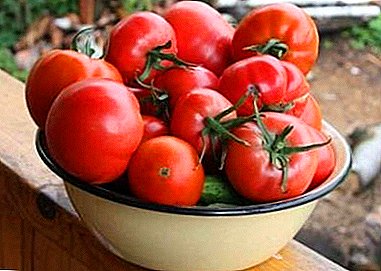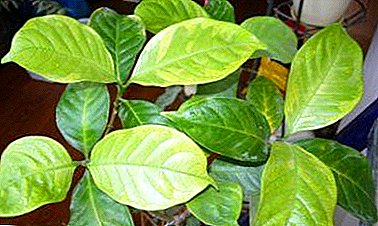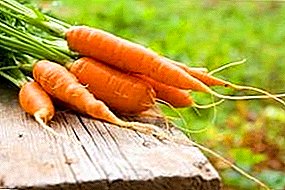
About garlic information a lot. It is well studied, but causes a lot of controversy in academic circles. Some consider it a toxic herbaceous plant, completely unsuitable for human consumption, while others are almost a panacea for all ailments.
Consider how garlic affects the gastrointestinal tract, when it can be eaten, and whether it is suitable for the treatment of human internal organs. In some cases, this vegetable crop can not be consumed, and when you can eat moderately.
What unpleasant symptoms can cause? What unpleasant consequences can be.
How does a vegetable affect the digestive tract?
Benefit and harm
In general, the vegetable has a positive effect on metabolic processes and the gastrointestinal tract. Its burning taste contributes to abundant salivation. Due to this, appetite is excited and digestion is improved. The result is a thorough digestion of food. Being a natural antiseptic, it effectively fights against various infections, disinfecting and killing pathogens.
Why sometimes after eating a vegetable, does heartburn, nausea, stomach swelling or stomach ache? Some Essential oils that are in the composition of garlic, can irritate the walls of the esophagus, stomach and duodenum.
With excessive use increases the secretion of hydrochloric acid, resulting in inflammation of the mucous membrane and exacerbation of gastrointestinal diseases. There may be intense thirst.
Read more about how garlic is useful and why it is harmful to the human body, read this article.
Effect on intestines
 Regular consumption of the product can destroy intestinal parasites.
Regular consumption of the product can destroy intestinal parasites.
Sulfur, which this plant contains, removes toxins from the body, therefore garlic treats patients with lead, mercury, cadmium, arsenic poisoning. It removes from the body not only heavy metals, but also harmful substances of food products - preservatives, food dyes, various other additives.
Garlic, in its essence, is not a laxative.
However, since constipation is often caused by poor digestion or impaired microflora, it can be quite effective in eliminating this problem. However, to get involved in vegetables is not recommended for an absolutely healthy person.
With excessive and too frequent use, it can damage not only the mucous membrane, but also the intestinal wall, even lead to its perforation.
The most serious risk associated with the use of garlic, even death, can be botulism. The sulfurous nature of the vegetable is the best nutrient for Slostridium botulinum - the causative agent of this disease. Botulism develops well in a raw product if it is stored in vegetable oil in a warm place.
- toenail fungus;
- herpes, acne and psoriasis;
- toothache;
- colds;
- joints;
- prostatitis;
- runny nose
Indications and Contraindications
In what cases can not be used?
Contraindications to the use of plants in raw form are:
- gastric ulcer, especially its acute form;
- gastritis, esophagitis, duodenitis, enteritis, colitis, and other inflammatory diseases of the gastrointestinal tract in the acute stage;
- gallstones (how to clean the liver and gallbladder with garlic, we told here);
- acute liver disease;
- condition after cholecystectomy;
- recurrence of hemorrhoids (on whether it is possible to eat garlic with hemorrhoids, as well as how hemorrhoids can be treated with it, read here).
When can I eat, but with a restriction?
In the presence of chronic diseases of the gastrointestinal tract, garlic must be used in food very carefully.
How to eat a vegetable so as not to hurt the stomach? With increased sensitivity to garlic and side effects instead of a natural product, you can use food additives based on it. They are made from dried garlic powder. The shell, which they are covered, not only eliminates odor, but also protects the mucous membrane of the stomach and intestines from irritation.
What unpleasant symptoms can cause?
 Can there be heartburn or other unpleasant consequences from eating a vegetable?
Can there be heartburn or other unpleasant consequences from eating a vegetable?
If a person has intolerance or is allergic to the plant, as well as if it is consumed excessively, a number of symptoms may appear, such as:
- stomachache;
- heartburn;
- nausea;
- vomiting;
- diarrhea.
Stomachache
As mentioned above, the composition of garlic includes various substances that cause irritation of the mucous membrane, as a result of which pain can occur. If the mucosa is sensitive to this plant, then it can be used as pills, without chewing. Reception with vegetable oil will facilitate swallowing and protect the mucous.
Heartburn
The plant has a powerful stimulating effect on the process of production of gastric juice. When garlic gets into the stomach, a large amount of bile and hydrochloric acid are produced raw, which causes irritation of the esophagus and the appearance of heartburn.
Nausea
Most often occurs with increased acidity of the stomach, as the latter is trying to push out of itself those substances that can harm him.
Vomiting
This symptom is caused by severe irritation of the gastric mucosa. Possible in case of poisoning by the plant due to its excessive use.
Diarrhea
Diarrhea can occur with individual reactions to the plant. However, it is necessary to know that, as a rule, garlic itself does not cause diarrhea. The intestines can be upset due to the use of any dish with garlic. In case of intoxication, a person must be helped and called a doctor. First aid is washing the stomach with plenty of water, giving a sorbent and anti-allergic agents.
After food poisoning, one should limit the use of the plant for a certain period in order to avoid irritation of the gastric mucosa. Subsequently, this product should be used in food with caution.
Use in diseases of the gastrointestinal tract
 Is eating a vegetable harmful to the stomach, or is it, on the contrary, useful? According to many traditional healers, garlic can be used to treat stomach pain and various diseases of the gastrointestinal tract. True, the opinions of professional doctors on this issue are different. But, if we take into account that when preparing tinctures and decoctions from it, the plant undergoes processing, acquiring several different qualities, as well as centuries-old experience of use, it can be concluded that its properties are paradoxical and unique.
Is eating a vegetable harmful to the stomach, or is it, on the contrary, useful? According to many traditional healers, garlic can be used to treat stomach pain and various diseases of the gastrointestinal tract. True, the opinions of professional doctors on this issue are different. But, if we take into account that when preparing tinctures and decoctions from it, the plant undergoes processing, acquiring several different qualities, as well as centuries-old experience of use, it can be concluded that its properties are paradoxical and unique.
Being a natural antibiotic, garlic cures hemorrhoids, gastritis, flatulence, constipation, atony of the stomach and intestines and many other diseases (how garlic affects the pancreas, read here).
More recently, the cause of gastric ulcers were considered stress and acidity. Currently, it is proved that this disease is caused by the bacteria Helicobacter, with which our plant successfully fights.
Added, in various dishes boiled garlic, will not be so dangerous to human health. As a seasoning for meat or vegetables, after heat treatment, it will somewhat softer the digestive organs. Therefore, patients with gastric ulcer are advised to eat a vegetable, finely chop it and stir it with a hot first course.
Baked garlic will be a good cure.in which most of the active components of the plant are stored.
Here are some recipes for the treatment of gastrointestinal diseases with garlic.
Garlic and cabbage juice
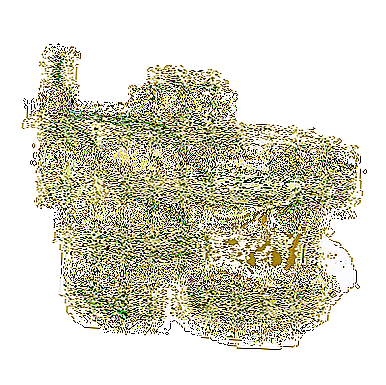 garlic - 1 tablespoon of juice;
garlic - 1 tablespoon of juice;- cabbage - 100 g of juice.
The fluids are mixed and the medicine is taken 2 times a day before meals.
Tincture
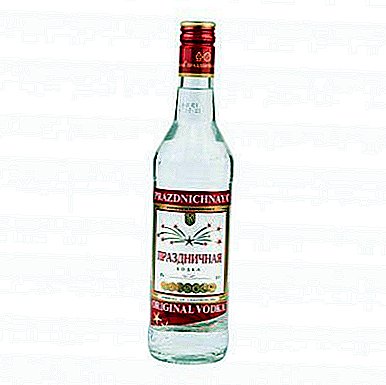 100 g of peeled garlic;
100 g of peeled garlic;- 0.5 liters of vodka.
Garlic is crushed, filled with vodka and put in a closed glass jar in a dark cool place for 10 days, after which it is filtered. Use one teaspoon three times a day before meals.
Both of the above recipes are used to treat gastritis with low acidity.
With milk
It is necessary:
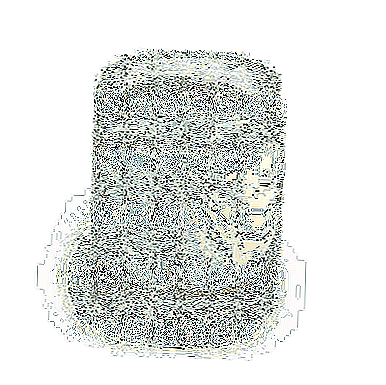 5 cloves of garlic;
5 cloves of garlic;- 1 glass of milk.
Garlic gruel is boiled in milk over low heat in a sealed container for 10-15 minutes, then infused and drunk warm with a teaspoon 4-5 times a day between meals. The course of treatment is 6 days. The recipe is used to treat worms.
With sea buckthorn
 2 times a day for 15-20 minutes gauze soaked in garlic juice is applied to the hemorrhoid nodes.
2 times a day for 15-20 minutes gauze soaked in garlic juice is applied to the hemorrhoid nodes.
Then the irritated skin surface is smeared with sea buckthorn oil.
Infusion
Composition:
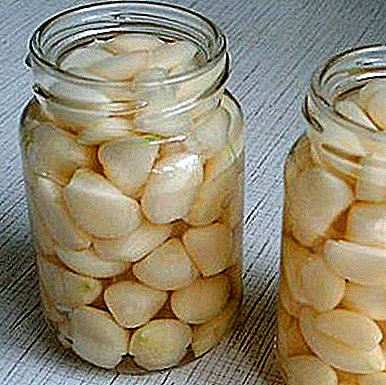 3 finely chopped cloves of garlic;
3 finely chopped cloves of garlic;- 0.5 liters of boiling water.
Garlic pour boiling water, insist a thermos for 30-40 minutes, drain. Take one glass 2-3 times a day.
It is used for diarrhea and poisoning.
Recipes, which include garlic, a great many. Some of them are more effective, some less. But to be healthy, It is necessary to eat at least 1-2 slices of this wonderful vegetable daily, of course, remembering the contraindications and carefully listening to your body.


 garlic - 1 tablespoon of juice;
garlic - 1 tablespoon of juice; 100 g of peeled garlic;
100 g of peeled garlic; 5 cloves of garlic;
5 cloves of garlic; 3 finely chopped cloves of garlic;
3 finely chopped cloves of garlic;
